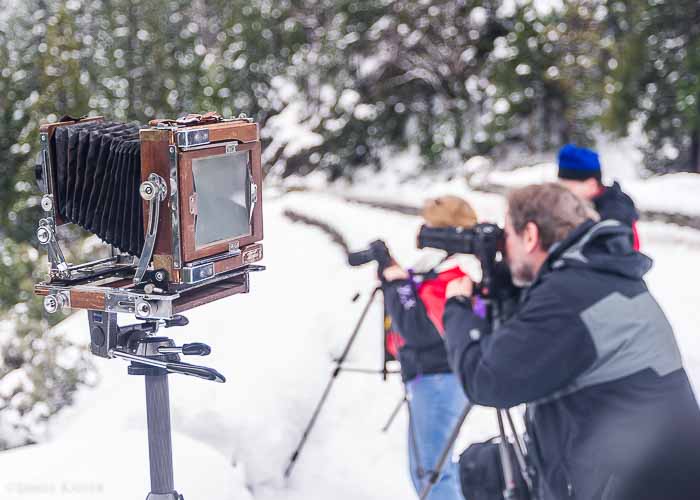
The Firefall is one of the most coveted photographs in Yosemite. Each winter, hundreds of photographers gather in Yosemite Valley, hoping to capture this one-of-a-kind natural phenomenon.
But if you want to photograph Yosemite’s Firefall, there are some important things you need to know.
How to Photograph Yosemite’s Firefall
1. Time it Right
The Firefall only lights up during sunset in mid- to late-February. If the skies are clear, the setting sun hits El Capitan at just the right angle to illuminate Horsetail Fall. Feb 17-19 is generally considered the “peak,” but the Firefall can light up nicely 6-7 days before or 3-4 days after the peak.
2. Check Snow or Rain Conditions
Horsetail Fall drains a 30-acre area with elevations between 6,200 and 7,600 feet. If there isn’t enough melting snow—or, during warm spells, rainfall—there won’t be enough runoff to feed the waterfall. And if Horsetail Fall isn’t flowing, the Firefall can’t happen. Badger Pass Ski Area, which is located at roughly the same elevation as the Horsetail Fall drainage, often lists snow conditions here.
3. Watch the Weather
If it’s raining, snowing, or even just cloudy at sunset, the sun’s rays won’t illuminate Horsetail Fall.
4. Arrive Early to Find the Perfect Spot
Horsetail Fall, which tumbles down the eastern face of El Capitan, is visible from several viewpoints along Northside Drive, Southside Drive, and the Merced River. Spend the morning or early afternoon scouting out different locations, and decide which spot suits you best. Then in the mid- to late-afternoon, claim your spot. Many viewpoints fill up with dozens of photographers by sunset, and it’s first-come, first-served. My strategy is to arrive early with a chair, a book, and a warm (preferably spiked) beverage.
5. Bring a Long Lens
The top of Horsetail Fall is located over 2,000 feet above the floor of Yosemite Valley. No matter what viewpoint you choose, you’ll need a long lens to frame a tight crop of the Firefall.
6. Use a Tripod
This is always good advice when photographing outdoors. But it’s particularly important for the Firefall, which happens in low light and generally requires a long lens. A sturdy tripod will stabilize your camera and reduce image blur, resulting in crisp, sharp photographs.
Follow these Yosemite Firefall photography tips, and—with a little luck from the weather gods—you’ll get the perfect shot!